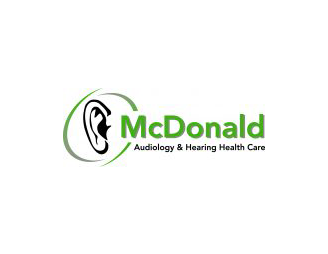You’ve likely heard that today’s hearing aids are “not your grandfather’s hearing aids,” or that hearing aid technology is light-years ahead of where it used to be, even as recently as 5 to 10 years ago. But what makes today’s technology so much better? And what exactly can modern-day hearing aids achieve that couldn’t be achieved in the past?
The short answer is, as with virtually all electronic devices, hearing aids have benefited greatly from the digital revolution. Hearing aids have evolved into miniaturized computers, with all of the programming versatility you would expect to see from a modern computer.
But before hearing aids became digital, they were analog. Let’s see if we can find out why the move from analog to digital was such an advancement.
Digital vs analog hearing aids
At the most basic level, all hearing aids work the same way. Each hearing aid consists of a microphone, amplifier, speaker, and battery. The microphone detects sound in the environment, the amplifier strengthens the signal, and the speaker delivers the louder sound to your ear.
Fundamentally, it’s not very complex. Where is does get complicated, however, is in the specifics of how the hearing aids process sound, which digital hearing aids accomplish much differently than their analog alternatives.
Analog hearing aids process sound in a relatively uncomplicated manner. In three basic steps, sound is recognized by the microphone, amplified, and delivered to the ear through the speaker. That is… ALL sound is made to be louder, including background noise and the sound frequencies you can already hear properly. In other words, analog hearing aids amplify even the sounds you don’t want to hear — think of the scratching sound you hear from an analog recording on a vinyl record.
Digital hearing aids, conversely, add a fourth step to the processing of sound: conversion of sound waves to digital information. Sound by itself is an analog signal, but rather than merely making this analog signal louder, digital hearing aids first convert the sound into digital configuration (saved as 0s and 1s) that can then be altered. Digital hearing aids, therefore, can CHANGE the sound before amplification by changing the information saved as a series of 0s and 1s.
If this seems like we’re talking about a computer, we are. Digital hearing aids are essentially miniature computers that run one customized application that manipulates and improves the quality of sound.
Advantages of digital hearing aids
Most modern hearing aids are digital, and for good reason. Given that analog hearing aids can only amplify inbound sound, and cannot adjust it, analog hearing aids have a tendency to amplify distracting background noise, making it challenging to hear in noisy environments and nearly impossible to talk on the phone.
Digital hearing aids, on the other hand, have the flexibility to amplify select sound frequencies. When sound is converted into a digital signal, the computer chip can recognize, label, and store specific frequencies. For instance, the higher frequency speech sounds can be tagged and stored separately from the lower frequency background noise. A hearing specialist can then program the computer chip to amplify only the high frequency speech sounds while suppressing the background noise — making it effortless to follow conversations even in noisy settings.
Here are some of the other advantages of digital hearing aids:
- Miniaturized computer technology means smaller sized, more discreet hearing aids, with some models that fit totally in the ear canal, making them practically invisible.
- Digital hearing aids tend to have more stylish designs and colors.
- Digital hearing aids can be programmed by a hearing specialist to process sound differently depending on the environment. By changing settings, users can achieve ideal hearing for many different situations, from a quiet room to a noisy restaurant to talking on the phone.
- Digital hearing aids can be fine-tuned for every patient. Each person hears different sound frequencies at different decibel levels. Digital hearing aids permit the hearing specialist to vary amplification for each sound frequency based on the properties of each person’s distinctive hearing loss.
Try digital hearing aids out for yourself
Reading about digital hearing aids is one thing, trying them out is another. But remember, to get the most out of any set of hearing aids, you require both the technology and the programming mastery from an experienced, licensed hearing specialist.
And that’s where we come in. We’ve programmed and fine-tuned countless hearing aids for individuals with all varieties of hearing loss, and are more than happy to do the same for you. Give us a call and experience the digital advantage for yourself!

